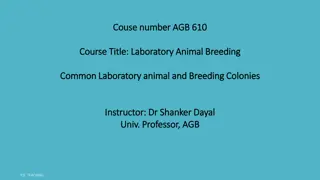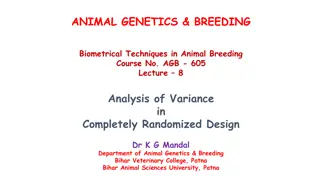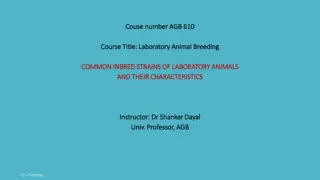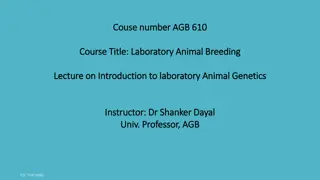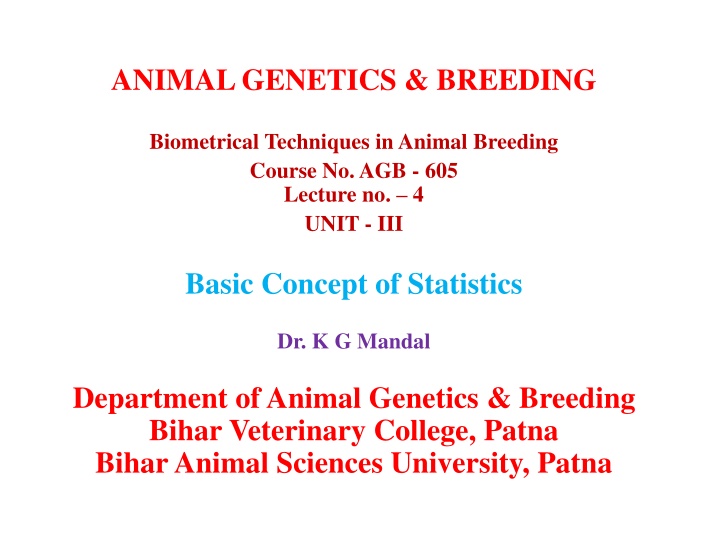
Biometrical Techniques in Animal Breeding: Statistics Basics
Discover the basic concepts of statistics in animal genetics and breeding, including functions like data presentation and hypothesis formulation. Explore measures of dispersion and central tendency, along with different statistical applications, limitations, and the importance of standard deviation. Learn about the coefficient of variation and its properties.
Download Presentation

Please find below an Image/Link to download the presentation.
The content on the website is provided AS IS for your information and personal use only. It may not be sold, licensed, or shared on other websites without obtaining consent from the author. If you encounter any issues during the download, it is possible that the publisher has removed the file from their server.
You are allowed to download the files provided on this website for personal or commercial use, subject to the condition that they are used lawfully. All files are the property of their respective owners.
The content on the website is provided AS IS for your information and personal use only. It may not be sold, licensed, or shared on other websites without obtaining consent from the author.
E N D
Presentation Transcript
ANIMAL GENETICS & BREEDING Biometrical Techniques in Animal Breeding Course No. AGB - 605 Lecture no. 4 UNIT - III Basic Concept of Statistics Dr. K G Mandal Department of Animal Genetics & Breeding Bihar Veterinary College, Patna Bihar Animal Sciences University, Patna
Basic Concept of Statistics What is Statistics ? Whether Science or Art ? Collection, compilation, analysis and interpretation of numerical data according to Prof. Croxton and Cowden Data ? And source of data. Primary Secondary presentation,
Function of statistics Presentation of facts Condensation of data Making comparison Formulation and testing of hypothesis Prediction Formulation of suitable policies
Application of Statistics Statistics & State Statistics & Business Statistics & Economics Statistics & Science Statistics & Research Limitation of Statistics
Central Tendency Mean AM GM HM AM > GM > HM Median Mode
Measures of Dispersion Measures of Dispersion ? Properties of a good Measure of Dispersion Simple to understand Easy to compute Based on each and every item of the dispersion Use for further algebraic treatment Should have sampling stability
Different Measures of Dispersion Range Mean Deviation Variance : 1/N [ (Xi X) : 1/N [ (Xi X)2 = x2 ( x)2/N N 1 Standard Deviation : + Variance Standard Error Coefficient of Variation Percentage (CV %) = (SD / Mean) x 100 % : SD / N
Merit of Standard Deviation It is the best measure of dispersion. Based on each and every item of the of the set of data. Used for further algebraic treatment. Less affected by sampling fluctuation.
Properties of CV% Developed by Karl Pearson Independent of unit i.e., no unit but expressed in % Used to compare the variability of two or more than two sets of data Used to compare the variability when different sets of data have different units



